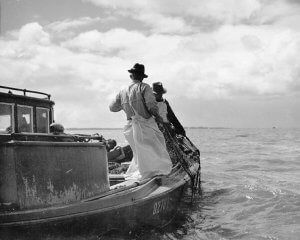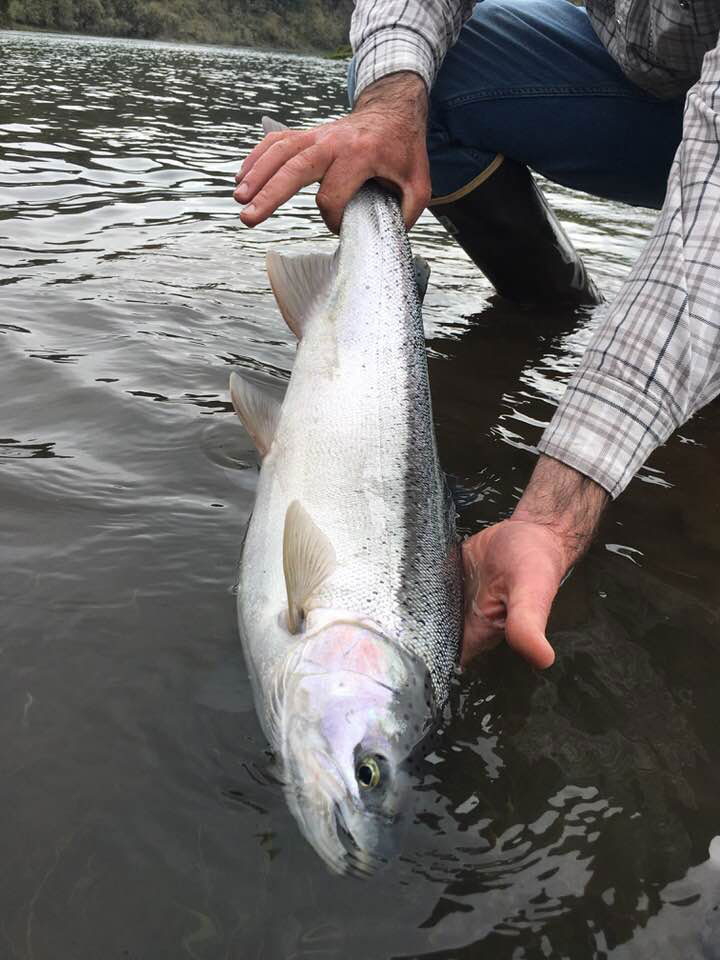Hello Friends,
As most of you have likely seen, Oregon and Washington have “closed the Columbia to steelhead fishing” (their words) as the initially improved 2018 forecast for upriver summer steelhead of 182,400 summer steelhead has been revised sharply down to 110,300 fish (a 40% reduction in the forecast) and reduced again on August 28 to 96,500 (another 8%).
Still Fishing
If the steelhead are delaying their migration due to warm waters below Bonneville Dam, the gillnet fishery that was authorized last week intercepted some wild steelhead. More gillnet fishing aimed at chinook may be authorized this week while many steelhead remain in the lower river. However, we will likely never know as the on-board observer program in place in 2017 was made voluntary for the non-treaty commercial fishers and Salmon For All commercial fishers politely refused to host any. It is unconscionable that there is no M&E on this fishery – the only consolation is that the non-treaty commercial fleet has received only three mainstem fishing days in this early season

Gillnet fishing near Astoria, photo by Ray Atkeson, 1937. From The Oregon History Project.
Then again, with daily reports of sport-fleet boats at the cold water refugia from the Cowlitz and Lewis Rivers, the migrating wild steelhead had no sanctuary there. These fisheries should also be subject to robust creel surveys and monitoring at boat ramps and landings along the Columbia.
Additionally, Tribal fishers will be taking wild steelhead in some cool-water refugia such as Drano Lake (WA) and Herman Creek (OR).
It is important to note that while “retention” of any steelhead is prohibited, fishing for and retaining salmon and other fish is still open. And since wild steelhead must be released unharmed under existing rules anyway, the steelhead “closure” acts more as a conservation measure for hatchery steelhead than real protection for wild steelhead.
Current Salmon and Steelhead Migration Numbers from Bonneville Dam
These numbers below reflect counts through Sunday. Sobering. Please feel free to share with your networks.
*************************************
At Bonneville Dam: 8/1 – 9/3 (TYA = most recent ten-year average)
Fall chinook = 67,463 adults / 147,981 10-yr Ave = 45.6% of TYA
Jacks = 8,719 / 20,984 10-yr. ave = 41.6 % of the TYA
The 2018 pre-season forecast for fall chinook past Bonneville is 253,100 adults which if met would be 47.3% of the TYA. Fall chinook passage is typically 50% complete by September 9, meaning the current passage is just past halfway to the estimate of 126,550 fall chinook with two weeks to go.
7/1 – 9/3 for summer steelhead at Bonneville
Total Steelhead = 60,294 / 227,239 (10-yr. avg.) = 26.5% of the TYA
Wild Steelhead = 22,060 / 83,536 (10-yr. avg.) = 26.4% of the TYA
ALERT:
There were MORE steelhead past Bonneville Dam on this date in 2017, which was a very poor return, particularly for wild B-run steelhead.
2017 hatchery and wild steelhead passage was 75,230, 14,936 more hatchery and wild steelhead than in 2018)
2017 Wild steelhead passage was 25,587 (3,527 more wild steelhead than in 2018)
Early Snake River Counts
Lower Granite Dam Counts for Steelhead:
Total hatchery + wild steelhead= 1,954 / 14,420 TYA = 13.6% of TYA
Wild steelhead = 1,013 / 5,621 TYA = 18% of TYA
Last Words
Despite the initial improved forecast and the positive spin from state fish agencies, 2018 is not looking good for wild steelhead and wild salmon. The Conservation Angler appreciates the sanctuary provided for wild salmon and steelhead at the Deschutes – Columbia confluence and in the lower one-mile of the Deschutes. We also support the “retention closures” in the Columbia River. Nevertheless, the low numbers of wild steelhead and the warm main-stem water temperatures warrant this closure and provide ample reason to take the same action in other cool water refugia downstream, as well as to apply the conservation measures across all fisheries.
Sincerely,

